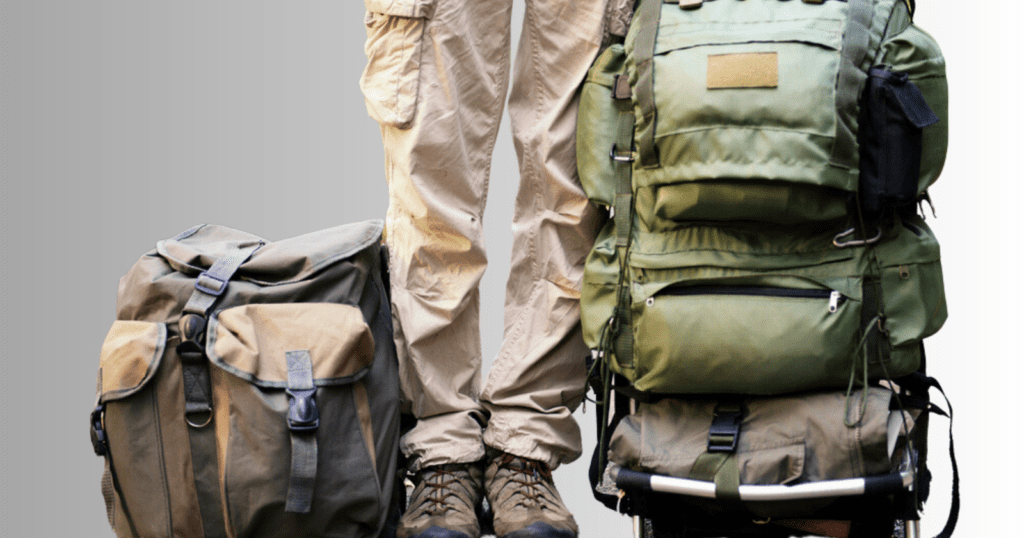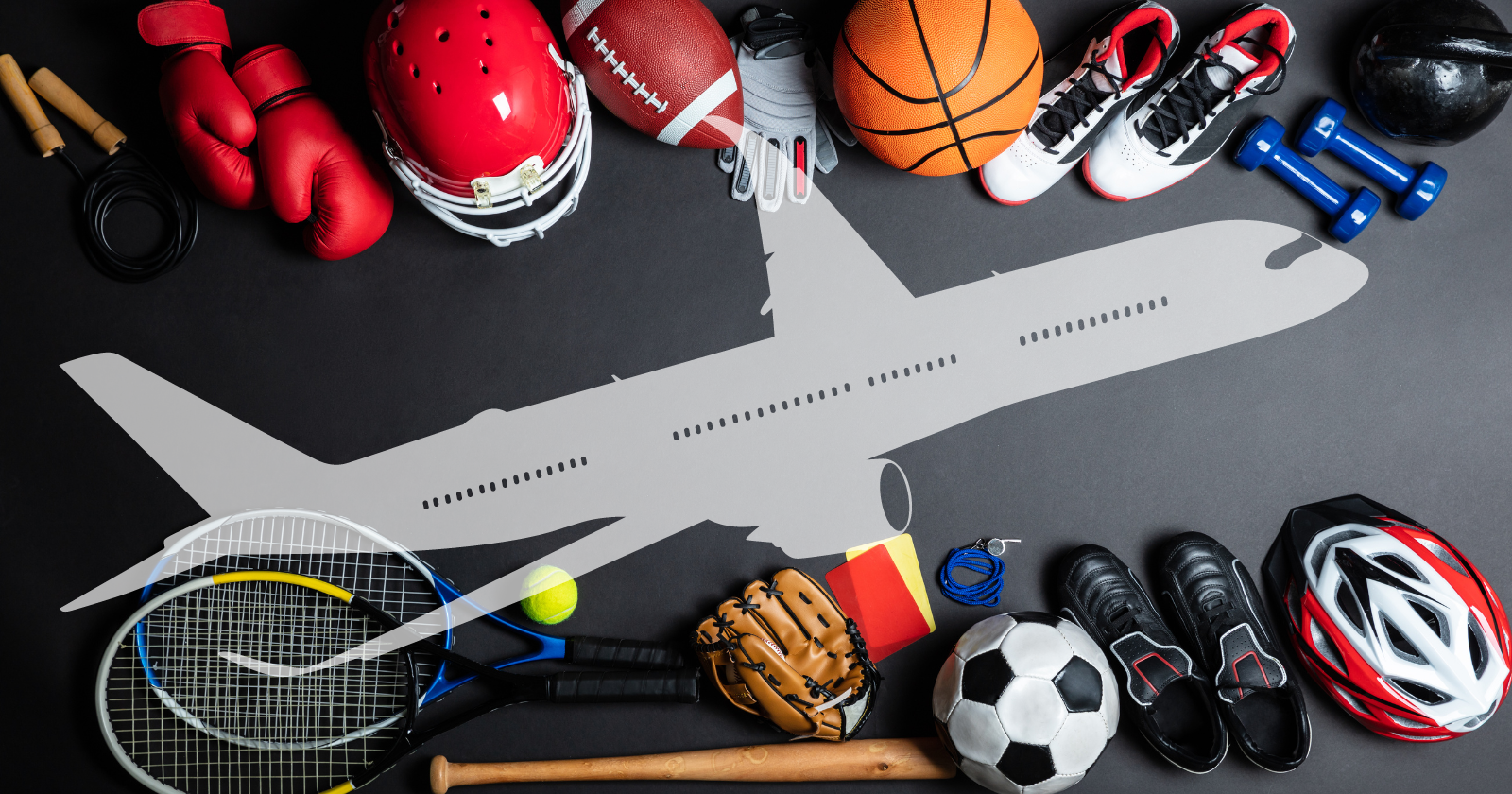Are you an athlete or an adventure planning your next trip? If so, you’re likely facing the daunting task of traveling with sports equipment through airport security.
Navigating airport security with sports gear can be a real headache. The fear of damage to your precious equipment, the uncertainty of rules and regulations, and the potential for delays can turn your exciting journey into a stressful ordeal.
With my extensive experience with TSA regulations and a deep understanding of airport security protocols, I’m here to alleviate your worries.
This guide is designed specifically for you – the adventurous traveler. It’s tailored to address your concerns, answer your questions, and provide practical solutions to the challenges you face when traveling with sports equipment.
In this article, we’ll delve into the TSA guidelines, provide tips on how to pack and protect your gear and guide you through issues so you can smoothly navigate the process. So, let’s embark on this journey together. Because, after all, your adventure should start from the moment you step out of your front door.
The Basics Of Traveling With Sports Equipment
Setting out on an adventure and traveling with sports equipment can be quite the experience. To make your journey as smooth as possible, it’s important to understand the basics.
What Qualifies As Sports Equipment
The category of sports equipment is quite vast, encompassing everything from the conventional to the highly specialized. Here are some examples:
- Standard equipment: Balls, bats, and racquets
- Water sports gear: Surfboards, diving equipment, paddleboards
- Winter sports gear: Skis, snowboards, ice skates
- Golf equipment: Golf clubs, golf balls, tees
Remember, the more specialized your equipment, the more likely it may require additional attention or special handling at the airport.
Common Issues Encountered With Specific Types Of Sports Equipment
Different types of sports equipment can present unique challenges when traveling:
- Bulky items: Surfboards, skis, or snowboards might be subject to additional handling fees or special packing requirements due to their size.
- Small, dense items: Golf clubs, tennis racquets, or climbing gear can attract additional security scrutiny due to their potential use as blunt objects.
Airline Policies For Sports Equipment
Every airline has its own set of rules regarding traveling with sports equipment, and they can vary significantly. Some might allow certain equipment in carry-on luggage, while others require all sports equipment to be checked. Here are some general points to consider:
- Check the airline’s policy on their website or contact their customer service
- Be prepared for potential additional fees for oversized or overweight items
- Ensure your equipment is packed according to the airline’s guidelines.
Packing Sports Equipment For Travel
Packing your sports equipment properly can make a world of difference when you’re on the move. Here’s what to remember:
- Efficient packing: Try to minimize space usage without compromising the safety of your equipment.
- Protecting your gear: Use padding, cases, or specialized bags to protect your equipment from potential damage during transit.
Special Considerations For Fragile Or Bulky Items
If you’re traveling with delicate or large items, it’s worth investing in additional protective measures:
- Fragile items: Consider using bubble wrap or specialized cases for extra protection.
- Bulky items: Look into options like hard-shell cases or padded bags that can help protect and manage large equipment.
Remember, careful planning and preparation are crucial when traveling with sports equipment to ensure a stress-free journey.

Getting Through Airport Security With Sports Equipment
Navigating airport security when traveling with sports equipment can feel like navigating a maze, especially if you’re not prepared. Let’s decode the process.
Understanding TSA Guidelines For Sports Equipment
The Transportation Security Administration (TSA) in the US has its own rules for traveling with sports equipment. Generally, checking in sports equipment is acceptable, but there can be nuances when it comes to carrying them onboard.
Specific Rules For Common Types Of Sports Equipment
Here are the TSA’s stances on a few common types of sports equipment:
- Surfboards: These are typically allowed in checked baggage, though size and weight limitations apply.
- Golf clubs: Can be carried on or checked in, but always confirm with your airline first, as some may not allow them in the cabin.
- Skis: Generally permitted in checked baggage, again subject to size and weight restrictions.
Remember, these are just examples. For a more comprehensive list, it’s always best to check the TSA’s official guide on traveling with sports equipment.
Tips For a Smooth Security Checkpoint Experience
Preparation is key to a smooth experience at the security checkpoint. Here are a few pointers:
- Pack smart: Keep any equipment that might need to be removed easily accessible.
- Stay organized: Keep your equipment neatly packed to simplify the inspection process.
- Be proactive: If you’re unsure about an item, ask a TSA officer before reaching the conveyor belt.
Dealing With Unexpected Issues At Security
If any issues arise during the security check, it’s important to maintain composure. Here’s what to remember:
- Stay calm: Being patient and cooperative will help resolve any issues more quickly.
- Communicate: Don’t hesitate to ask questions or express your concerns to the security staff.
- Be respectful: Remember that TSA officers are doing their job to ensure everyone’s safety.
International Travel With Sports Equipment
When traveling with sports equipment across borders, additional rules might come into play. Each country has its own customs, regulations, and restrictions.
Navigating Customs With Sports Equipment
Customs rules can vary widely from country to country. Here are a few general tips:
- Do your research: Check the customs regulations of your destination country well in advance.
- Be aware of quarantine laws: Some countries may require certain sports equipment to be cleaned or disinfected before entering.
- Document everything: Keep a list of the equipment you’re carrying, as you might need to declare it.
Remember, a successful journey with sports equipment starts with careful preparation and a good understanding of the regulations.
Case Studies: Real-life Experiences Of Traveling With Sports Equipment
Hearing firsthand experiences can offer invaluable insights and practical tips when it comes to traveling with sports equipment.
The Surfer’s Tale: Carrying A Surfboard On A Flight
Jake, a seasoned surfer, has quite a tale about taking his surfboard to Hawaii. Here’s what he learned from the experience:
- Importance of sturdy travel case: A sturdy surfboard bag was essential for protecting his board during transit.
- Checking in early: Jake found that arriving early at the airport gave the staff ample time to handle his surfboard properly.
- Keeping an eye on size restrictions: Jake was mindful of the airline’s size restrictions for surfboards to avoid any last-minute surprises.
The Golfer’s Journey: Transporting Golf Clubs Across Continents
Amy, an avid golfer, traveled from the US to Scotland with her golf clubs. Here’s what her journey taught her:
- Using a golf travel bag: Amy found a high-quality golf travel bag to be a great investment for protecting her clubs.
- Proper tagging: Amy learned the importance of clearly tagging her golf bag with her contact information in case it got misplaced.
- Checking airline policies: Amy emphasized the need to verify the airline’s policies on golf clubs to ensure a hassle-free experience.
The Skier’s Experience: Maneuvering Skis Through Airport Security
Bella, a passionate skier, shared her experiences from a trip to the Swiss Alps. Here are some highlights from Bella’s journey:
- Managing bulky equipment: Bella emphasized the importance of a good quality ski bag for protecting her skis and making them easier to transport.
- Understanding airline policies: Bella found it crucial to understand her airline’s specific policies on ski equipment in advance.
- Planning for extra time: Bella suggested allotting extra time at the airport due to the size of the ski equipment.
These are just some of the many experiences out there when it comes to traveling with sports equipment. If you have your own story to share, we’d love to hear it!

Frequently Asked Questions About Traveling With Sports Equipment
We understand that traveling with sports equipment can raise a lot of questions. To assist you, we’ve gathered and answered some of the most frequently asked questions on the topic.
Can I carry my sports equipment as carry-on luggage?
This largely depends on the type of sports equipment and the airline’s specific policy. Smaller items like tennis racquets may be allowed in the cabin. However, larger items such as surfboards or skis typically must be checked. Always check the airline’s sports equipment policy before travel.
Are there any additional fees for traveling with sports equipment?
A: Yes, airlines often charge additional fees for oversized or overweight sports equipment. The exact amount varies between airlines and in some cases, the type of sports equipment. Make sure to check this with your airline before your trip.
How should I pack my sports equipment for air travel?
Packing your sports equipment properly is crucial. Use sturdy, padded bags or hard-shell cases specifically designed for your type of equipment. For extra protection, you can also use bubble wrap or foam padding inside the case. Remember, the goal is to protect your equipment from any impacts during transit.
Additional Resources
If you are looking for more tutorials, walkthroughs, and troubleshooting on TSA, here are some additional posts about TSA:
Traveling With Sports Equipment – Conclusion
Traveling with sports equipment can indeed be a challenge, but with a little bit of know-how and preparation, you can navigate airport security like a pro. So, gear up and get ready for your next adventure!
Now, it’s your turn. Have any tips or stories about traveling with sports equipment? Or perhaps a question we haven’t covered? Feel free to drop a comment below. We love hearing from our readers!
Happy travels, my friends.
